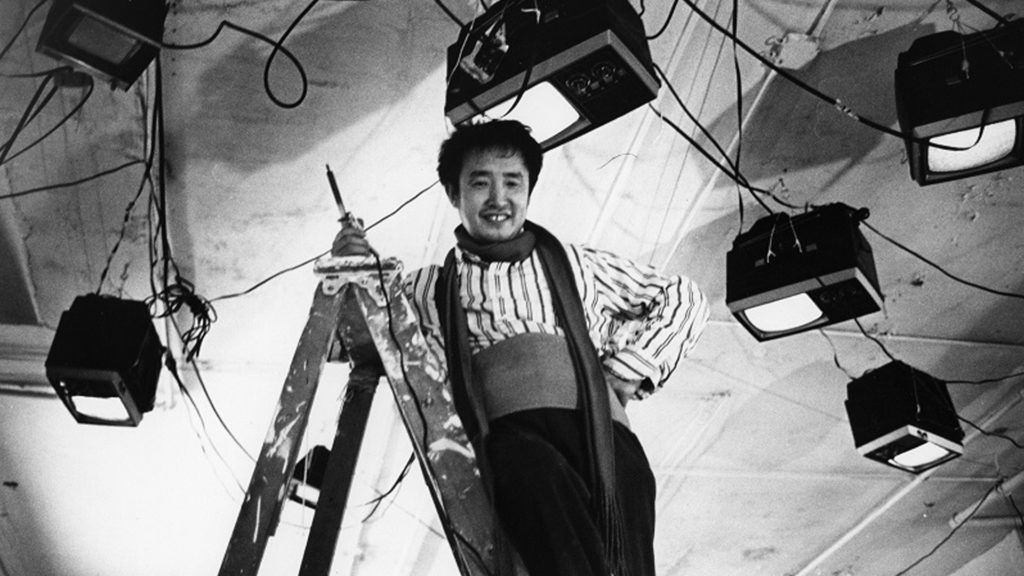The Histories of Performance.Electric visions. From Nam June Paik to Matthew Barney

– for young people aged between 18 and 25 (not yet turned 25);
– for groups of 15 people or more;
– La Galleria Nazionale, Museo Ebraico di Roma ticket holders;
– upon presentation of ID card or badge: Accademia Costume & Moda, Accademia Fotografica, Biblioteche di Roma, Centro Sperimentale di Cinematografia, Enel (for badge holder and accompanying person), FAI Fondo Ambiente Italiano, Feltrinelli, Gruppo FS, IN/ARCH Istituto Nazionale di Architettura, Sapienza Università di Roma, LAZIOcrea, Palazzo delle Esposizioni, Amici di Palazzo Strozzi, Accademia Nazionale di Santa Cecilia, Scuola Internazionale di Comics, Teatro Olimpico, Teatro dell’Opera di Roma, Teatro di Roma, Università degli Studi di Roma Tor Vergata, Youthcard;
valid for one year from the date of purchase
– minors under 18 years of age;
– myMAXXI cardholders;
– on your birthday presenting an identity document;
– upon presentation of EU Disability Card holders and or accompanying letter from hosting association/institution for: people with disabilities and accompanying person, people on the autistic spectrum and accompanying person, deaf people, people with cognitive disabilities and complex communication needs and their caregivers, people with serious illnesses and their caregivers, guests of first aid and anti-violence centres and accompanying operators, residents of therapeutic communities and accompanying operators;
– MiC employees;
– journalists who can prove their business activity;
– European Union tour guides and tour guides, licensed (ref. Circular n.20/2016 DG-Museums);
– 1 teacher for every 10 students;
– AMACI members;
– CIMAM International Committee for Museums and Collections of Modern Art members;
– ICOM members;
– from Tuesday to Friday (excluding holidays) European Union students and university researchers in art history and architecture, public fine arts academies (AFAM registered) students and Temple University Rome Campus students;
– IED Istituto Europeo di Design professors, NABA Nuova Accademia di Belle Arti professors, RUFA Rome University of Fine Arts professors;
– upon presentation of ID card or badge: Collezione Peggy Guggenheim a Venezia, Castello di Rivoli Museo d’Arte Contemporanea, Sotheby’s Preferred, MEP – Maison Européenne de la Photographie;
MAXXI’s Collection of Art and Architecture represents the founding element of the museum and defines its identity. Since October 2015, it has been on display with different arrangements of works.


23 Jul 2025 09.00 pm
summer at MAXXI • talkCampioni: Pierluigi Collina
24 Sep 2025 05.00 pm
MAXXIperTUTTIIl Museo si raccontaguided tours in LIS
25 Sep 2025 07.00 pm
Le ConversazioniRoberto Andòwith Antonio Monda
26 Sep 2025 07.00 pm
musicThe Scoop Jazz Band Noi e lo stadio
1 Oct 2025 06.00 pm
books at MAXXISenza riparo. Sei tentativi di leggere il presenteby Guido Mazzoni

Sorry, this entry is only available in Italian.
MAXXI Auditorium – € 5
four-event subscription – € 15
10 individual seats reserved for myMAXXI cardholders writing to mymaxxi@fondazionemaxxi.it by the day before the event
Five authorial and informative lessons, to recount the evolution of a language that has been able to go through the last decades of with great creativity.
Over the last century, the body of the artist and their actions became central to live art practice, gradually finding their own lexicon within the performance vocabulary. Performance, which has established itself as a non-intermittent, tangible artistic expression of the reflections of conceptual art, has become, over time, the medium through which generations of artists have explored and experimented with the link between the performative dimension and the language of theatre, music, film, the body and nature.
Electric visions. From Nam June Paik to Matthew Barney
With Alessandra Mammì
It is neither cinema nor television, yet it will disrupt the domains of both, producing a language that changes both artist’s films and the very use of television. Since Sony produced the first portable machine in 1960, some artist-pioneers have been using the camera as a weapon to distort visual and television iconography and make a political, intimist, narrative and even sculptural use of it, which will forever change the visual language of exhibitions and the viewer’s perception. Behind this story there are people, experiments, anecdotes and mistakes that are worth telling in order to understand what is left of video art on the liquid screens of the digital era.
Alessandra Mammì